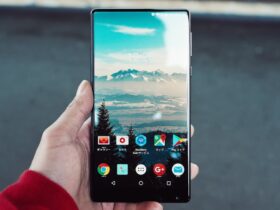Mastering the Multi-Device Experience: Windows Tips for Seamless Integration
In today’s modern world, where technology is at the forefront of our daily lives, having a seamless multi-device experience is essential. Whether you’re using a desktop, laptop, tablet, or smartphone, the ability to transition effortlessly between devices can greatly improve productivity and ease of use. With Windows, you have a powerful ecosystem at your fingertips that allows for a smooth and integrated multi-device experience. In this blog post, we’ll explore some tips and tricks to help you make the most of your Windows devices and create a seamless experience across all your tech tools.
The Power of Multi-Device Integration: Surprising Statistics
Before we dive into the tips, let’s take a moment to explore the impact of multi-device integration on our daily lives. Did you know that 81% of Americans use more than one device at the same time? Whether it’s checking emails on a laptop while watching TV or using a smartphone to research while shopping, the use of multiple devices has become the norm in today’s society. Additionally, 73% of people switch between devices for completing tasks, showing how integral multi-device usage has become in our lives.
Utilizing Windows for Seamless Integration
Syncing Your Devices with OneDrive
OneDrive is a powerful tool that allows you to sync your files and data across all your Windows devices. By enabling OneDrive on all your devices, you can access your documents, photos, and files from anywhere, at any time. This means you can start a project on your desktop and seamlessly continue working on it from your laptop or tablet without missing a beat.
Leveraging the Power of Microsoft Edge
Microsoft Edge is not just a web browser – it’s a catalyst for a seamless multi-device experience. With features like “Continue on PC” and the ability to sync browsing history and tabs across devices, you can effortlessly transition from researching on your phone to reading on your laptop with just a single click.
Using Your Microsoft Account for Unified Access
By signing in with your Microsoft account across all your devices, you can ensure a unified experience. Your settings, preferences, and even open apps and websites can be synced, allowing you to pick up right where you left off no matter which device you’re using.
How to Apply These Tips in Your Daily Life
Now that you’re equipped with these valuable insights, let’s discuss how you can apply these tips to your everyday routine.
Step 1: Enable OneDrive on All Your Devices
Take the first step by setting up OneDrive on all your Windows devices. This will ensure that your files and documents are seamlessly accessible across all platforms.
Step 2: Sync Your Browsing with Microsoft Edge
Make sure to sign in to Microsoft Edge with your Microsoft account to sync your browsing history and open tabs. This will allow for a smooth transition when switching between devices.
Step 3: Sign in with Your Microsoft Account Everywhere
To truly unify your multi-device experience, sign in with your Microsoft account on all your Windows devices. This will ensure that your settings, preferences, and data are consistent no matter which device you’re using.
In Summary
Mastering the multi-device experience with Windows can greatly enhance your productivity and make your digital life more convenient. By leveraging tools like OneDrive, Microsoft Edge, and your Microsoft account, you can seamlessly transition between devices and access your data from anywhere. So, take advantage of these tips, and discover the power of a truly seamless multi-device experience with Windows.















